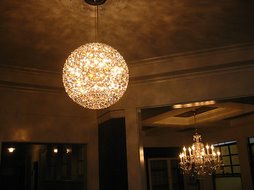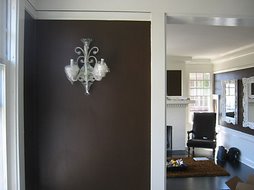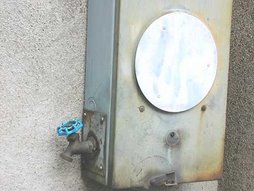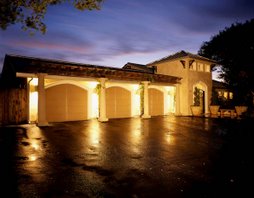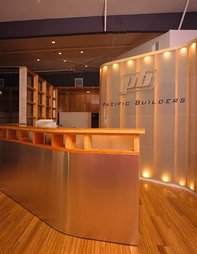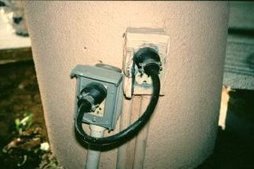The size of an electrical service can play a crucial role in your home. Some homes have a 60 amp service, or less, as opposed to the more common 100 amp service. In fact, some homes will have a larger 200 or 400 amp service depending on their specific requirements. Is a 60 amp service (or smaller) safe? This will depend on how the system was installed, maintained and / or improved upon over the years. Generally though, there is nothing less safe above the size of this service than larger ones, except than some smaller services are not grounded. There are a number of ways this can be addressed without installing a larger service. In fact, installing a larger service will not necessarily address the grounding of branch circuits.
An ampere ("amp" for short) is the unit of electrical current in a circuit. Volts measure the force or pressure behind the current. Watts are a total measurement of power derived from multiplying amps times volts (W = A x V). If we rearrange this equation then A = W / V. Let's take an example to better explain this: A regular receptacle in a home has 110 volts going to it. If you were to plug in a lamp with a 100 watt light bulb it would draw almost one (1) amp. Using the above formula 100 watts divided by 110 volts equals 0.9 amps (100W / 110V = 0.9A) What does this mean? Most receptacles in a home, for example, are designed to carry a 15 amp load before the tripping the breaker at the main distribution panel. The wire that carries that load is designed only to carry those 15 amps too…they're matched up in terms of size or load. Using our example then, simply put, you can only put about 15 light bulbs that are 100 Watts on a 15 Amp circuit before the breaker trips or the fuse blows. It gets more complicated too when you use things like motors and such as they are required to start from a dead / off position and require more amps initially than when running continuously.
There are certain issues surrounding smaller electrical services and perhaps most notable are the lifestyle restrictions it may impose for some people. If you have a 60 amp service this means you can only have a limited number of items "up and running" at one time without the main service becoming overloaded. Often, these smaller services have less branch circuits and distribution wiring too which can mean less receptacles available for your use a particular room or even throughout the house. When you consider certain appliances require their own dedicated circuits, for example, a stove at 40 amps, a clothes dryer at 30 amps, an air conditioner at 30 amps, a microwave a 15 amps, etc. you may find that a 60 amp service is not enough for your particular lifestyle. Even though there are dedicated circuits that doesn't mean they use all the amperage all the time. For example, a 40 amp stove circuit is designed so that all the burners along with the oven, etc. can be on at one time. So, if you're only using one burner, you won't be using 40 amps but something far less.
Another item of note is that certain homeowner insurance providers may require a further inspection by the electrical utility authority in your area (a cost of about $440 to $500.00). They may determine that certain upgrades are required in your home, for example, to the service and / or electrical system to bring it up to a 100 amp service (a cost of about $2,200.00 to $3,200.00). In the event that you decline an Inspection by them, your insurance may be declined. Whether you have an inspection by them, or not, your homeowner insurance provider may request additional / higher premiums. Some insurance companies prefer to insure homes with updated wiring and / or services.
